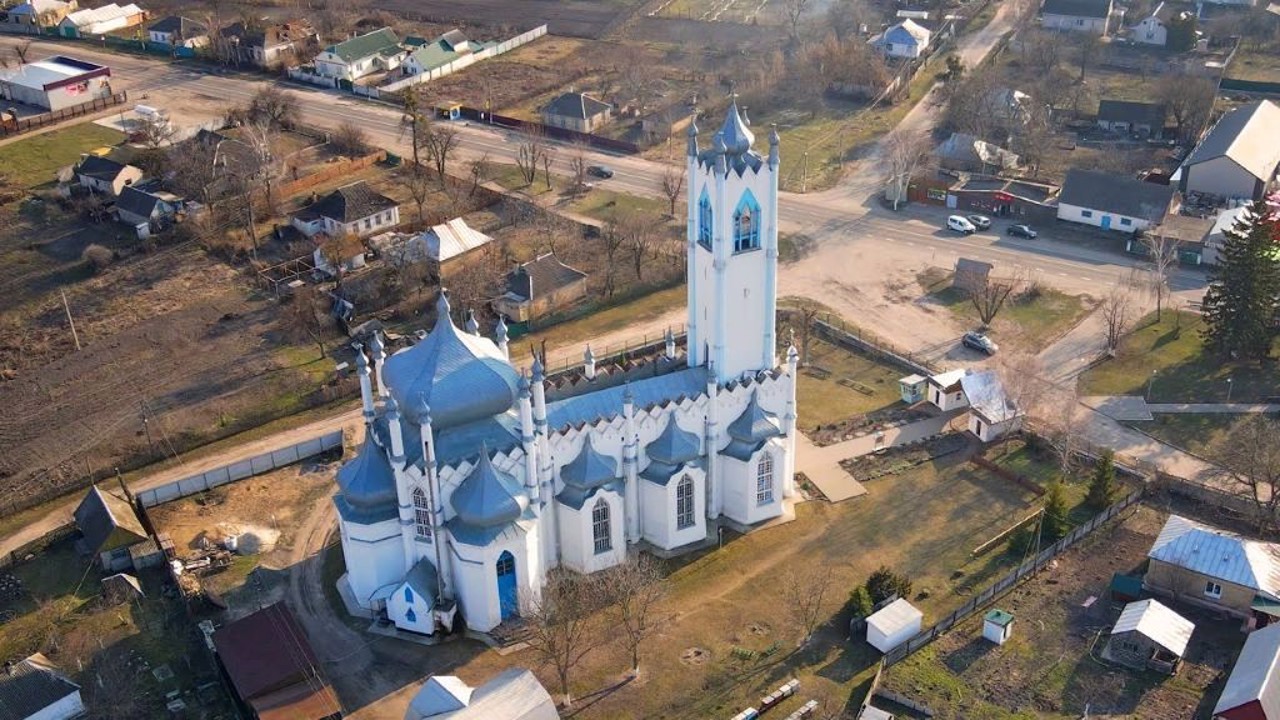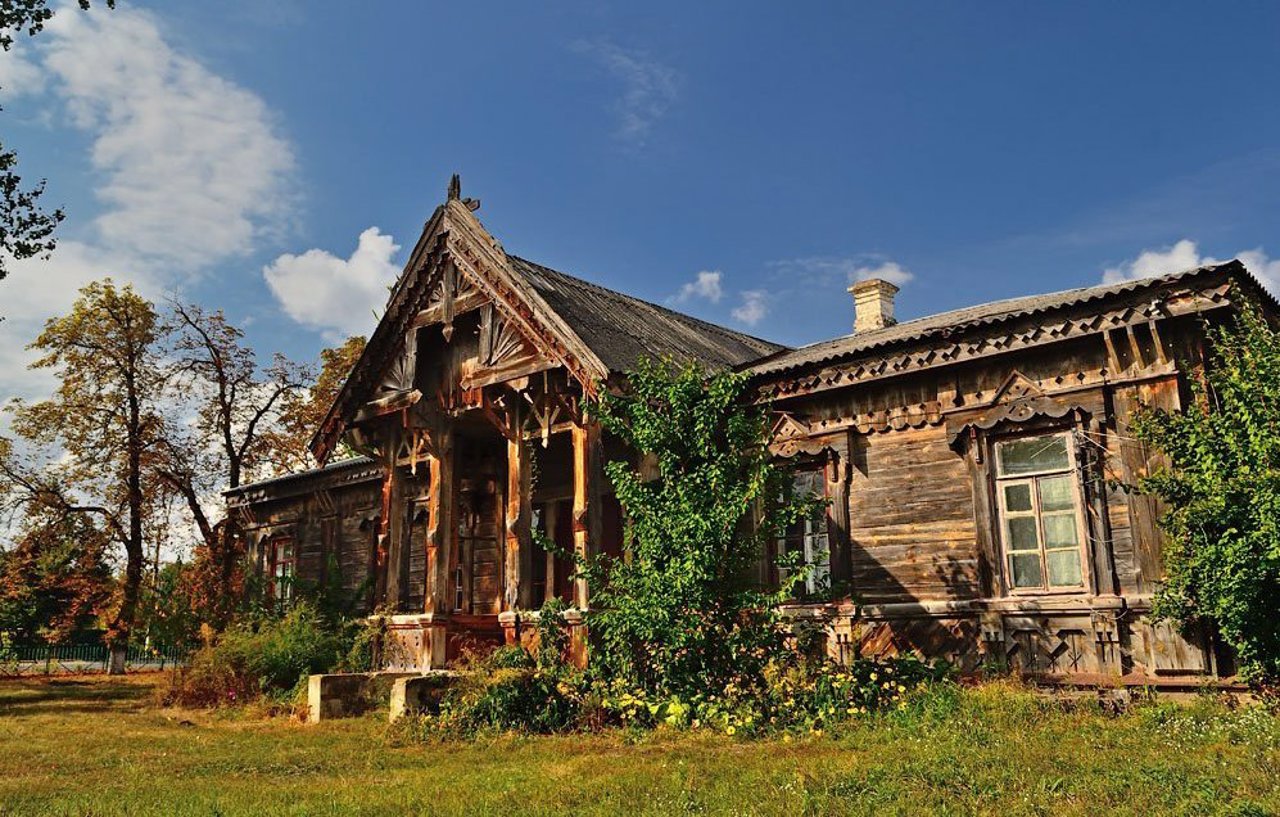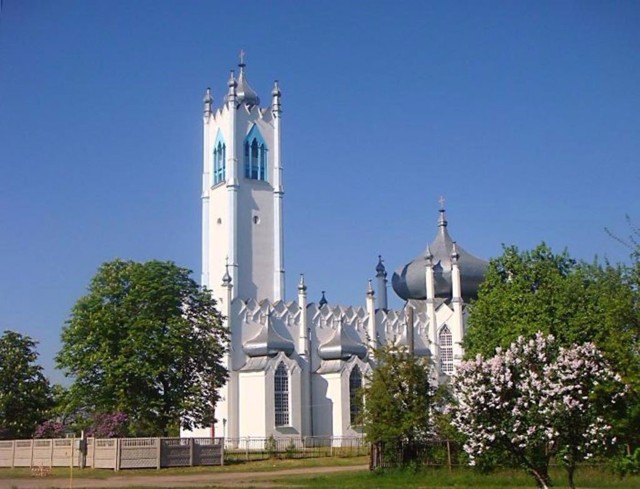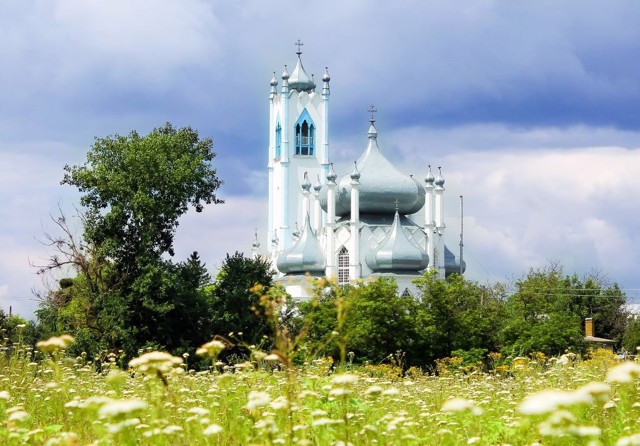Functional temporarily unavailable
General information about Moshny
The large village of Moshny on the Vilshanka River is located near the Dnipro, between Cherkasy and Kaniv. The name, perhaps, comes from the Stroslavian word "moshna", which means a pocket.
It was mentioned for the first time in 1494 in the deed of gift of the Lithuanian prince Oleksandr Yahellonchyk to the boyar Vasyl Yershovych. The village carried out a "jasach service", that is, in the event of an enemy approach, it gave a jasach - a signal of danger. The signal tower stood on Mount Shpyl next to the current sanatorium "Moshnohirya".
In the 16th century, Prince Vyshnevetskyi built a castle and a church, obtained Magdeburg rights. At the turn of the 16th and 17th centuries, the Orthodox Moshnohirskyi Ascension Monastery was established. Durin ...
The large village of Moshny on the Vilshanka River is located near the Dnipro, between Cherkasy and Kaniv. The name, perhaps, comes from the Stroslavian word "moshna", which means a pocket.
It was mentioned for the first time in 1494 in the deed of gift of the Lithuanian prince Oleksandr Yahellonchyk to the boyar Vasyl Yershovych. The village carried out a "jasach service", that is, in the event of an enemy approach, it gave a jasach - a signal of danger. The signal tower stood on Mount Shpyl next to the current sanatorium "Moshnohirya".
In the 16th century, Prince Vyshnevetskyi built a castle and a church, obtained Magdeburg rights. At the turn of the 16th and 17th centuries, the Orthodox Moshnohirskyi Ascension Monastery was established. During the Liberation War, Moshnohirya was a town of hundreds.
At the end of the 18th century, Prince Hrihoriy Potemkin bought these lands. His niece Elizaveta Branytska, who married Count Mykhaylo Vorontsov, inherited the village from him. The count launched a flurry of activity in the village. In 1823, the first Ukrainian steamship "Bzhilka" was built at the shipyard he founded. A huge park was laid out (now the "Moshnohirya" reserve, a sanatorium) and a palace with a 58-meter Svyatoslav tower was built (not preserved). The architecturally original Transfiguration Church (1830-1840) was also built at the expense of Vorontsov according to the project of architect Giorgio Torricelli.
The last owner of the village was Kateryna Balashova (nee Shuvalova), who built a school, a hospital and a house for doctors, which have survived to this day; at the same time, the development of industry began.
During the Second World War, the village was badly damaged and fell into disrepair, never regaining the status of a city.
Велике село Мошни на річці Вільшанка розташоване поблизу Дніпра, між Черкасами і Каневом. Назва, можливо, походить від строславянского слова "мошна", що означає кишеню.
Вперше згадується в 1494 році в дарчій грамоті литовського князя Олександра Яґеллончика боярину Василю Єршовичу. Село несло "ясочну службу", тобто в разі наближення ворога подавало ясу - сигнал про небезпеку. Сигнальна вишка стояла на горі Шпиль поруч з нинішнім санаторієм "Мошногір'я".
В XVI сторіччі князь Вишневецький збудував замок і костел, домігся надання Магдебурзького права. На рубежі XVI-XVII століть виник православний Мошногірський Вознесенський монастир. Під час Визвольної війни Мошногір'я було сотенним містечком.
В кінці XVIII століття ці землі купив княз ...
Велике село Мошни на річці Вільшанка розташоване поблизу Дніпра, між Черкасами і Каневом. Назва, можливо, походить від строславянского слова "мошна", що означає кишеню.
Вперше згадується в 1494 році в дарчій грамоті литовського князя Олександра Яґеллончика боярину Василю Єршовичу. Село несло "ясочну службу", тобто в разі наближення ворога подавало ясу - сигнал про небезпеку. Сигнальна вишка стояла на горі Шпиль поруч з нинішнім санаторієм "Мошногір'я".
В XVI сторіччі князь Вишневецький збудував замок і костел, домігся надання Магдебурзького права. На рубежі XVI-XVII століть виник православний Мошногірський Вознесенський монастир. Під час Визвольної війни Мошногір'я було сотенним містечком.
В кінці XVIII століття ці землі купив князь Григорій Потьомкін. Від нього село успадкувала племінниця Єлизавета Браницька, яка взяла шлюб з графом Михайлом Воронцовим. Граф розгорнув в селі бурхливу діяльність. На закладеній ним судноверфі в 1823 році був побудований перший український пароплав "Бджілка". Був закладений величезний парк (зараз - заповідник "Мошногір'я", санаторій) і побудований палац з 58-метровою вежою Святослава (не збереглися). Оригінальна по архітектурі Преображенська церква (1830-1840 роки) також зведена коштом Воронцова за проєктом архітектора Джорджо Торрічеллі.
Останньою власницею села була Катерина Балашова (уроджена Шувалова), яка побудувала школу, лікарню і будиночок для лікарів, які збереглися до наших днів; тоді ж почався розвиток промисловості.
Під час Другої світової війни село сильно постраждало і занепало, так і не повернувши собі статус міста.
Сплануй своє перебування у Moshny
What to see and where to go in Moshny
Tourist attractions and museums of Moshny
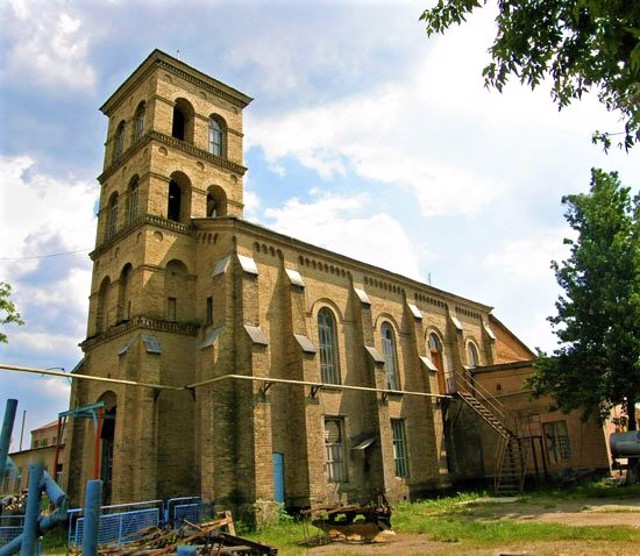
Catholic Church
Architecture , Temple
The Roman Catholic church in Moshny was built in the 1850s at the expense of Yelyzaveta Vorontsova, the widow of Count Mykhaylo Vorontsov.
During Soviet times, the temple was closed. Until now, the building is used as one of the production buildings of the mill.

Doctor's House (Zemsky Hospital)
Architecture
The wooden one-story doctor's house in Moshny was built at the end of the 19th century according to the design of the famous Kyiv architect Vladyslav Horodetsky. This is the only wooden building by Gorodetsky that has survived in the world.
Vladyslav Horodetsky often visited the Moshny estate of the Balashov landowners, and also carried out various architectural orders for them. During one of his visits, the owner of the estate, Kateryna Balashova (Shuvalova), asked the architect to design a complex of buildings for the village district hospital.
Only one building has survived in its original form, which served as housing for the village doctor. It is made in the Scandinavian style and richly decorated with carvings in the Ancent Rus style with elements of Ukrainian Art Nouveau. Some interior elements have been preserved to this day, in particular authentic stoves and a fireplace.
Until recently, the building, as in the past, housed apartments for local medical workers. Nearby you can see another wooden house that serves as one of the hospital buildings.
In 2025, the local hromada, with the participation of the team of the NGO "Nova Druzhkivka", opened the cultural and artistic center "Horodetsky" in the Doctor's House. This is a modern multifunctional space that combines history and new initiatives. It houses the Center for Joint Creativity for learning, cultural events and gatherings, and there are areas for small group work and creative meetings.
In the future, it is planned to create a museum dedicated to the legacy of the architect Gorodetsky, as well as the history of the hromada.
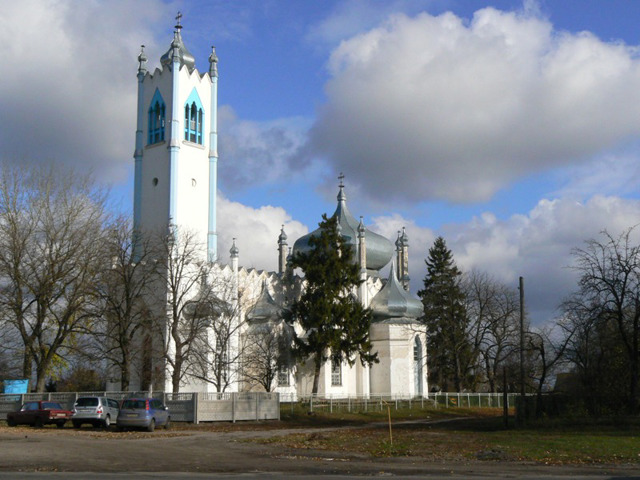
Savior and Transfiguration Church
Temple , Architecture
The architecturally unusual Church of the Transfiguration was built in Moshny in 1830-1840 by the city architect of Odesa, Dzhordzho Torrichelli, on the order of Count Mykhaylo Vorontsov.
Those who have seen the Vorontsov Palace in Alupka will immediately understand the architectural affinity of the Crimean palace and the village Orthodox church. Experts define this style as a romantic mixture of Tudor Gothic and oriental motifs.
The Transfiguration Church is a unique temple. Despite the oriental decor, the construction followed the principles of the Orthodox "cross dome". The side branches of the cross are greatly shortened, and the central one, on the contrary, is elongated. According to the fashion of the 19th century, it connects the temple with the 39-meter bell tower into a single entity. Above the central cross is the largest dome facing east. The special charm of the building is given by numerous elegant towers, which, together with the pointed windows, make the tall quadrangular belfry Gothic.
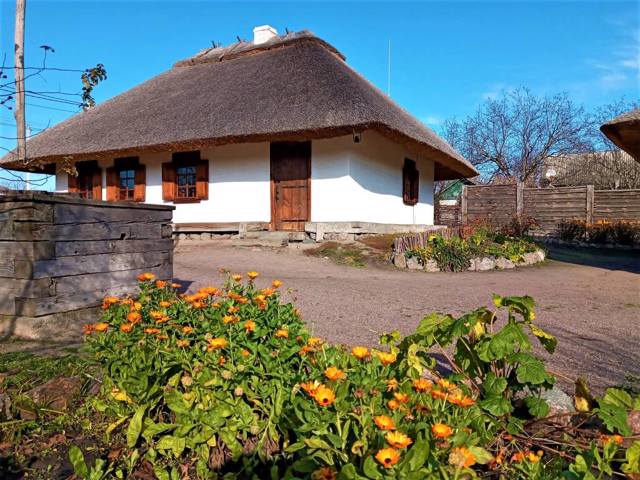
Taras Shevchenko Museum
Museum / gallery , Palace / manor
Taras Shevchenko Museum was opened in 2014 on the territory of the Nahanovsky inn in the village of Moshny, where Shevchenko lived for a few days after his release from arrest in 1859, during his third (and last) trip to Ukraine.
A residential building has been preserved from the inn, where the main exhibition of the museum was located. In 2013, before the opening of the museum, the building underwent major repairs, the roof was covered, and the concrete foundation was poured. But all the walls, thresholds, ceilings and the stove with a couch remained original. The layout of the house has also been preserved. In the rooms, original furniture of the 19th century, household utensils, embroidered towels, icons are displayed.
All buildings in the yard of the former inn are reproduced according to descriptions and drawings.
Moshny on photo and video
Reviews Moshny
Geographical information about Moshny
| {{itemKey}} | {{itemValue}} |
|---|---|
| Region |
Cherkasy |
